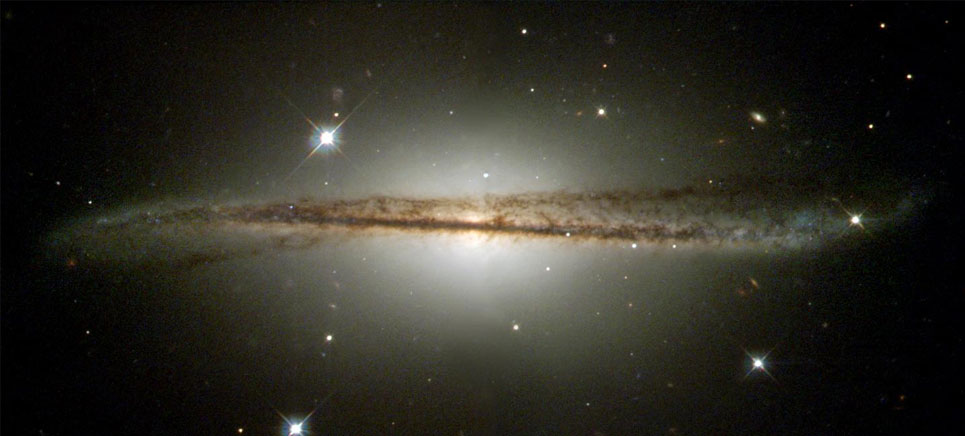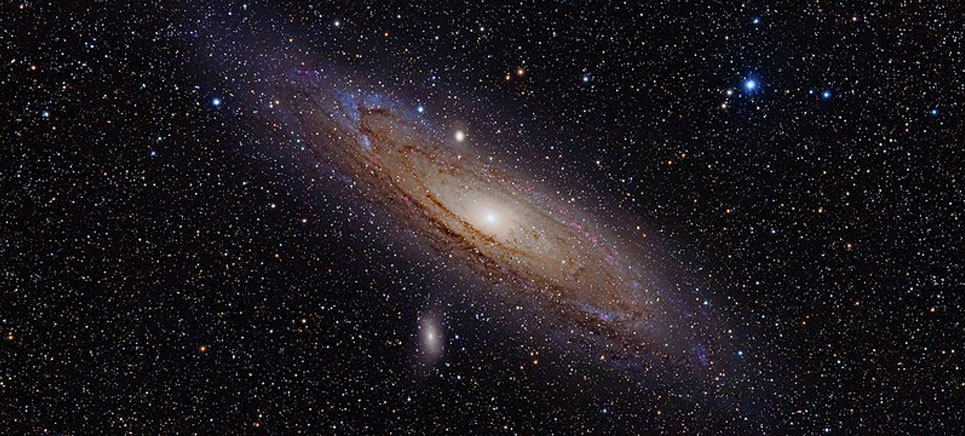The Milky Way is the galaxy where our Solar System is located. In other words, the Milky Way is our home galaxy where planet Earth and the entire humanity came into existence. Spiral-shaped Milky Way is estimated to be of the size between 170,000 and 200,000 light-years. Looking at the Milky Way in the night sky is one of the most enchanting views we can get from the Earth. Let’s find out more facts about our galactic home.
1. Milky Way Contains Over 200 Billion Stars
If you think 200 billion is a huge number, think again! The largest known galaxy, IC 1101, contains about 100 trillion stars. Well, the figure of speech “astronomical figures” is used for a reason! The Milky Way is estimated to have 100 to 400 billion stars. According to a study published in the Nature magazine, Milky Way produces seven new stars every year. However, about 10 billion years ago, the Milky Way was producing new stars at about 30 times higher rate. However, our star, the Sun, was not formed in that period. The Sun is about only 4.5 billion years old. The Milky Way still has raw material to produce billions of more stars.
2. Shape of Milky Way is Warped Spiral
Our galaxy’s disc is not flat but is actually warped (twisted) because of the gravitational pull by two nearby dwarf galaxies called Large and Small Magellanic clouds.

3. Solar System is Far Away from the Center of the Milk Way
Our solar system is about 27,000 light-years away from the galactic center. The Sun is located in the Orion Arm of of the Milky Way.
4. Earth’s Plane and the Milky Way’s Plane are Not the Same
Earth does not orbit in the plane of the Milky Way. Instead Earth’s orbit is about 63° inclined to the galactic orbit.
5. Black Hole at the Center of the Milky Way
Most of the galaxies have a supermassive black hole at their center. The black hole at the center of Milky Way is called Sagittarius A*. Mass of this black hole is equal to about 4.3 million Suns. So much of mass is packed inside Sagittarius A* whose diameter is only 22.5 million km (14 million miles).
6. Milky Way is Constantly Moving
Just like everything else in the universe, the Milky Way is also moving. The speed of Milky Way is estimated to be 600 km/s (2.2 million km/h). It’s difficult to imagine that we have so much of movement around us. The Earth is moving around the Sun and then the Sun is also moving along with the Milky Way at such mind-boggling speed! (but this speed is nothing compared to the speed of light)
7. Milky Way is as Old as the Universe
The oldest stars in the Milky Way are almost as old as 13 billion years. This suggests that our galaxy was formed soon after the universe began.
8. Nearest Galaxy to the Milky Way
Andromeda or Messier 31 (M31) is the nearest major galaxy to Milky Way. Andromeda is about 2.5 million light-years away from the Earth and, just like Milky Way, it is also barred spiral galaxy.
9. There is No Real Photograph of the Whole Milky Way
Although a lot of photographs showing a spiral galaxy are passed off as the “Milky Way” but in reality there is no photograph of the whole of our galaxy. The reason is simple! We are located inside the galaxy — so there is no way to photograph it the whole. It’s is akin to that we can not take the photo of a house’s outside view while being inside it. We will have to go out of the galaxy in order to see it from the outside. The photographs shown as Milky Way are actually photos of other spiral galaxies. We can only see a very small part of Milky Way from the Earth. The following photograph shows the Andromeda spiral galaxy.

10. Most of the Milky Way is Invisible
Nowadays it is theorized that 90% of the matter in the Milky Way is actually the invisible dark matter. Only 10% matter is visible to the telescopes because it emits eletro-magnetic radiation. Dark matter does not emit any radiation. Therefore, we can not detect its presence.
Use the citation below to add this article to your bibliography
"Milky Way Galaxy: Facts about Our Galaxy, its Shape and its Black Hole." Dashamlav.com. Web. 12 June 2025. <https://dashamlav.com/milky-way-galaxy-facts-shape-black-hole/>
Dashamlav.com, "Milky Way Galaxy: Facts about Our Galaxy, its Shape and its Black Hole." Accessed 12 June 2025. https://dashamlav.com/milky-way-galaxy-facts-shape-black-hole/
"Milky Way Galaxy: Facts about Our Galaxy, its Shape and its Black Hole." (n.d.). Dashamlav.com. Retrieved 12 June 2025 from https://dashamlav.com/milky-way-galaxy-facts-shape-black-hole/
